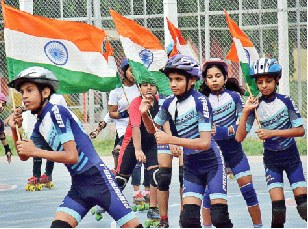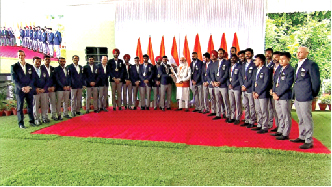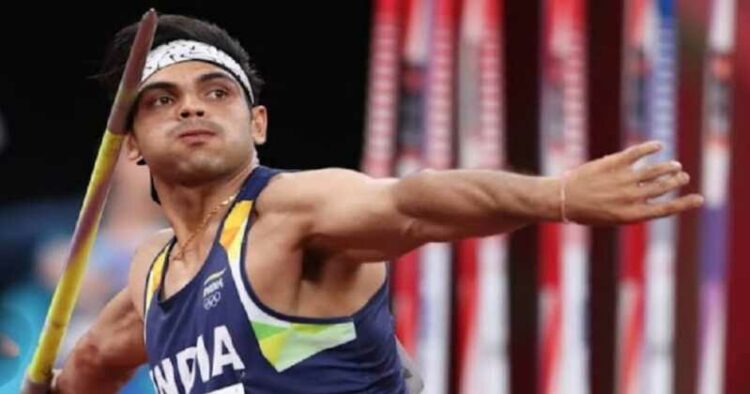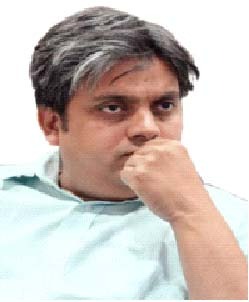“Kaun Bola Mujhse Na Ho Paayega?
Apna Time Aayega”
Who says I can’t to do this,
My time will come”
The famous lyrics from the Hindi movie, Gully Boys, best encapsulates the mood in the Indian sports today. For far too long after the Independence, the Indian sports story had a hackneyed and beaten track. In multi-sporting global event after the other, when we used to see the athletes from the leading sports nation excelling, we used to often wonder- Kya apna time bhee kabhi aayega? (Will our time ever come?). The entire narrative of India in the Olympics was woven around the golden age of the Indian hockey and then two ‘near and yet so far moments’ in athletics. The first such moment was the 1960 Rome Olympics, when the flying Sikh Milkha Singh missed the podium by a whisker. The second such moment was PT Usha in 1984 Los Angeles Olympics, when she missed the medal by a fraction of seconds. In fact, by the end of the century, the larger question was—why the second most populous country on the globe returns empty handed from the Olympics?
A Renewed Vigour, New Stories of Glory
The ruling dispensation either royally ignored the question or answered them as per their convenience. More importantly, we had similar approach to the crucial questions in the field of economics, politics, defense, national integration amongst others. India after 2014, in the post- Narendra Modi, era has got the reputation of taking on many of these difficult questions head-on. The realm of sports is no different. While India still has miles to go, before it becomes a global sports power, one can confidently say now- Apna Time Aayega ( Our time will definitely come). The early signs are visible.
In the Tokyo 2020 Olympics, the country came out with the best ever performance in terms of the number of medals won. Though the great Milkha Singh left this beautiful planet just a year before the Olympics, eventually Neeraj Chopra became the first Indian to get a gold medal for the country in athletics. India’s final medal tally read:-‘1 gold, 2 Silver and 4 bronze medals’. In the Tokyo 2020 Paralympics, the Indian contingent won 19 medals. This included, 5 gold, 8 silver and 6 bronze medals. India started participating in the Paralympics Games from 1968 onwards. In its journey from 1968 games to 2016 games, India had the total of 12 medals only.

India is amongst the select few countries which has participated in all the editions of the Asian Games. In the first Asian Games in 1951 in Delhi, India was ranked second. After this, while the other countries leaped ahead, India started getting off the track. In the 1990 Beijing Asian Games, India could not finish amongst the top 10 nations in the continent for the first time. But, 2018 Jakarta Asian Games was the clear indicator that finally we are on the track. India ranked eighth in the games, but what was more heartening was the fact that the country won 70 medals in totality. 16 of these medals were gold and this is country’s highest medal yield in the history of the game.
India made its debut in the World University Games in 1959. From there till the last World University Games, India had a total of 18 medals in its name. However, in the 2023 World University Games alone, India grabbed 26 medals. This included, 11 gold, 5 silver and 10 bronze medals. More than the silver lining, this is the clear indicator of the times to come. In this eight year timeline, The Indian Premier League has consolidated its position as the marquee global sports property. The inaugural edition of the Women’s Premier League made an impactful debut. And, in the form of Premier Kabaddi League, India has another world class sports property. So, what has changed in India since 2014, the post Narendra Modi era? And, how the country has finally managed to find an answer to the most difficult question which went unanswered for years in the Indian sports?
Empowering Through Sports
Prime Minister Narendra Modi and his Government took their guard attacking at the roots of the poverty. As their innings at the crease moved ahead, team Modi started raising the bar consistently in terms of last mile delivery and connectivity. This firmed up a strong bond between the people and the leader and it allowed the leader to approach the sports and its administration with the sense of ownership. This brought about a seminal change in the Indian sporting eco-system. In fact, Prime Minister and his team have beautifully used the soft power of sports as the tool for the strong social messaging.
Sports was supposed to be the luxury and ruling dispensation should keep it at their arms length. The celebration of victory in sports was supposed to be nationalistic and so be avoided
Prime Minister Narendra Modi frequently engages with the athletes, both abled and differently abled, before, during and after the major sporting events. ‘Our fellow players in the games village used to wonder that the Prime Minister of the country is personally calling and talking to the athletes after the competitions. On one hand, he congratulates the winning athletes and on the other hand, he consoles the losing ones and inspires them not to give up the hope’- says a Paralympics medal winner in the Tokyo Paralympics 2020. ‘This consistent interaction and personal rapport with the different athletes also keeps the bureaucracy and the sporting ecosystem on the toes’- says Mahavir Rawat, the sports journalist. ‘Earlier the support system around the athletes used to be the VVIPs, now the players themselves are the real VVIPs and the rest are in the supporting cast’. Gradually, this message has started rubbing on in the sports federations as well.
A New Ecosystem
Within this broader paradigm shift in the ecosystem, there are salient features which are now the major highlights of Narendra Modi government. Firstly, the base of the talent pool is broadening constantly and consistently. Earlier, National Games used to happen after a huge gap. Now, the Khelo India Games are being organised directly by the Sports Federation of India in close co-ordination with the host state. This has ensured that the athletes get to compete and participate regularly. After the forced ban because of Covid 19, the recently organized Khelo India Youth Games and Khelo India University Games have seen record participation. In addition, these games are covered live through multi camera production unit and broadcast live by public broadcaster DD Sports and other leading private channels and OTT platforms of the country like Star Sports, Sony and Jio cinema. All these have helped in amplifying the reach of these games.

Secondly, the earlier leftist dominated narrative shied away from owning the benefits of the ageless Indian civilization’s special attributes like Yoga and the indigenous games. Prime Minister Narendra Modi and his government have brought both Yoga and indigenous games in the mainstream of the public discourse. This has gone a long way in promoting the culture of fitness and sports in the country. Thirdly, the identified talent pool through the schemes like TOPS (Top of the Podium Scheme) are nurtured through best of the training, participation and exposure. In addition to the TOPs senior, TOPs junior is being put into the place. Thirdly, the sports growth story has been the inclusive, reflecting the true spirit of our great country. So, Paralympics and Olympic athletes are for the first time being treated equally and the government is planning to include the Para Sports in the Khelo India Games soon.
As the Union Minister, Kiran Rijiju said in the parliament, ‘when we meet the sportspersons of the earlier generation, they say that sportspersons of the current generation are lucky to represent the country in the Prime Minister Narendra Modi era.” The Delhi Commonwealth Games 2010 eroded the self confidence of the nation. It was largely believed that India will not be able to hold another sporting event of similar nature in the foreseeable future. But, as the country is now working on the road map for the next 25 years, leading up to the 100 years of independence, the country is now getting the confidence back to host the Olympics.



















Comments